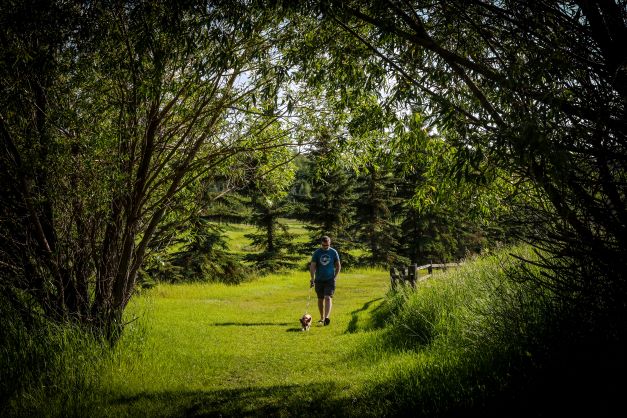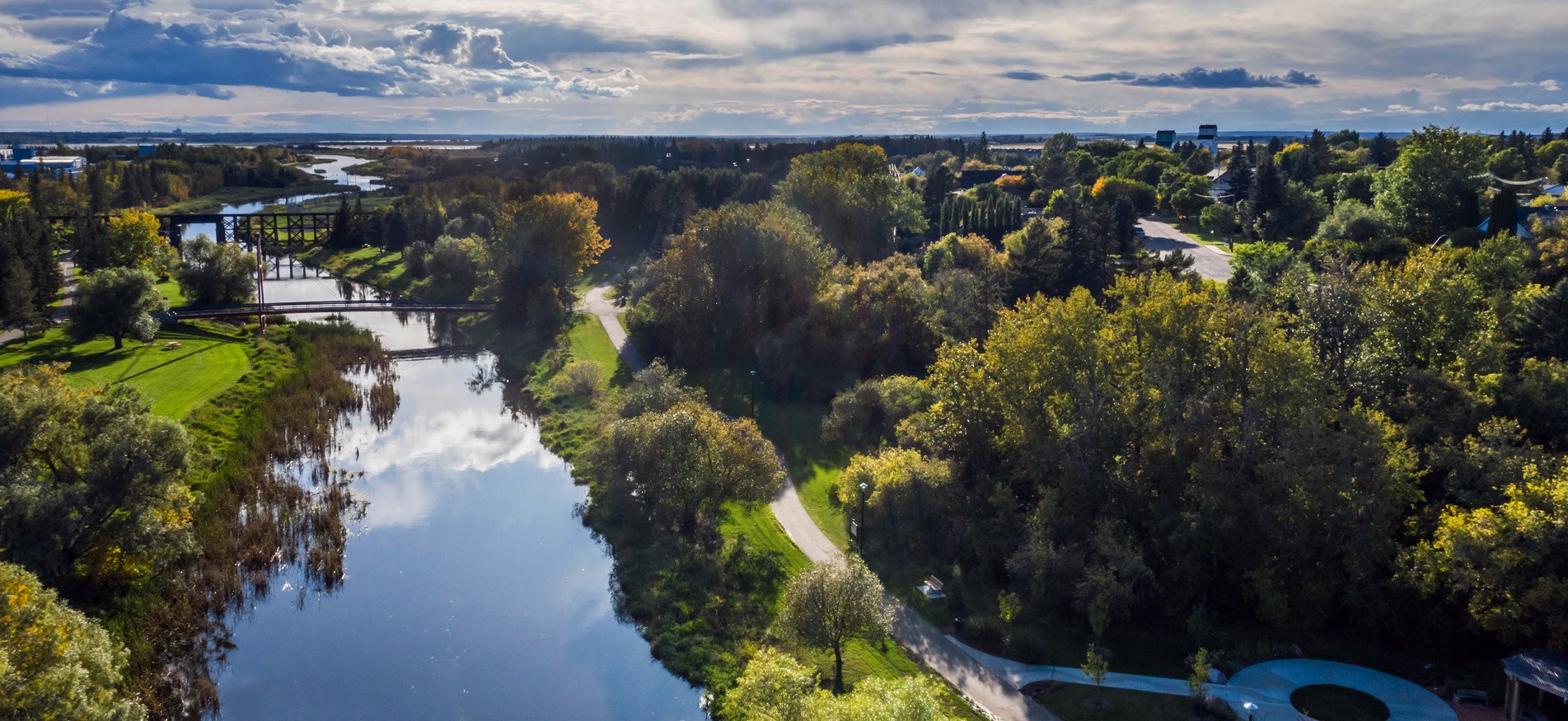This Climate Adaptation Plan is written to guide the City of St. Albert towards building climate resilience; helping residents prepare their homes, businesses, and livelihoods for the expected impacts of climate change.
Scope
Community-wide (all municipal assets, services, and operations); all homes, private buildings, and infrastructure; the local economy; ecosystem functions and services; health and well-being of residents across the entire community of St. Albert.
Four community pillars – Built Environment, Natural Environment, Public Health and Safety, and Water Management.
Risks
6 risks – Heat Wave, Freezing Rain, Wildfire Smoke, Wildland Fire, Invasive Species, Seasonal Drought.
Opportunities
2 opportunities – Changes in Energy Demand for Heating, Ventilation, and Air Cooling (HVAC); Increased Agricultural Productivity.
Actions
51 actions.
Six action types (Bylaw, Plan, Policy, Program, Project, Operations) associated with each of the four pillars. Each action is given a priority level.
Social Equity
Consideration of exacerbated impacts on vulnerable populations, including the young, elderly, disabled and long-term sick, as well people experiencing homelessness or living in poor-quality homes
Action – Create an emergency response program for vulnerable populations to stay overnight at designated clean air facilities when outdoor air quality is hazardous.
Community Engagement
Contributions from City of St. Albert’s Environmental Advisory Committee and City of St. Albert municipal staff.
Implementation
See Appendix E: Actions Ranking Evaluation.


You must be logged in to post a comment.